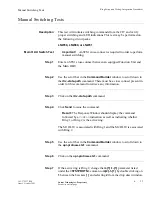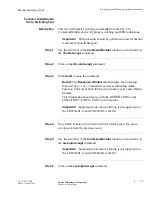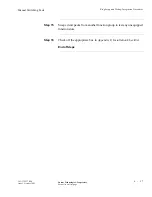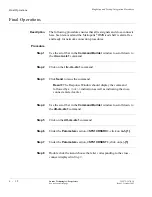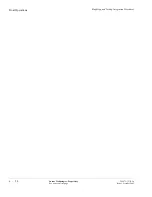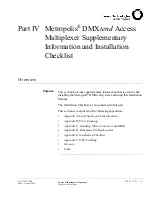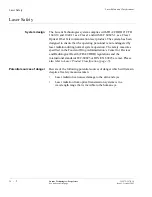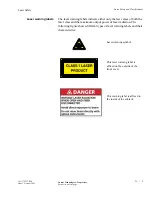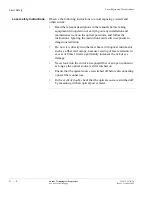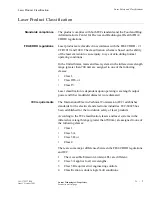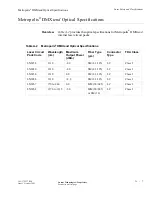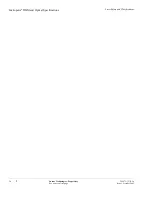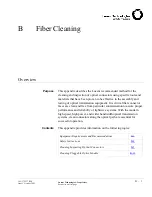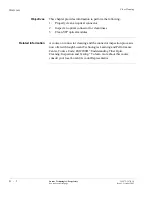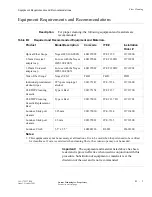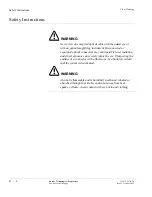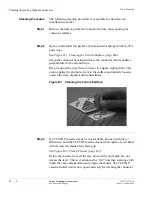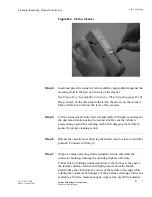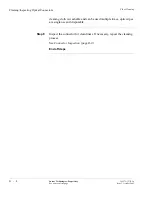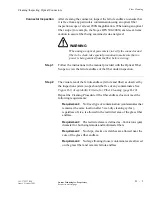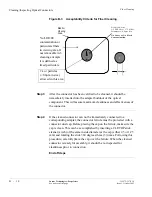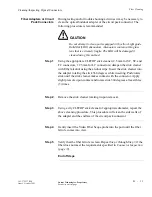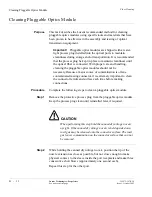
Laser Safety and Classifications
Laser Product Classification
...........................................................................................................................................................................................................................................................
A - 5
Lucent Technologies - Proprietary
See notice on first page
365-372-327 R2.0
Issue 1, October 2003
............................................................................................................................................................................................................................................................
Laser Product Classification
Standards compliance
The product complies with both IEC standards and the Food and Drug
Administration’s Center for Devices and Radiological Health (FDA/
CDRH) regulations.
FDA/CDRH regulations
Laser products are classified in accordance with the FDA/CDRH - 21
CFR 1010 and 1040. The classification scheme is based on the ability
of the laser emission to cause injury to eye or skin during normal
operating conditions.
In the United States, lasers and laser systems in the infrared wavelength
range (greater than 700 nm) are assigned to one of the following
classes:
•
Class I,
•
Class IIIb, or
•
Class IV.
Laser classification is dependent upon operating wavelength, output
power and fiber modefield diameter (core diameter).
IEC requirements
The International Electro-Technical Commission (IEC) establishes
standards for the electrical and electronic industries. IEC-60825 has
been established for the worldwide safety of laser products.
According to the IEC classification, lasers and laser systems in the
infrared wavelength range (greater than 700 nm) are assigned to one of
the following classes:
•
Class 1,
•
Class 3A,
•
Class 3B, or
•
Class 4.
There are some major differences between the FDA/CDRH regulations
and IEC:
1.
The Accessible Emission Limits (AEL) are different.
2.
Class 3A applies to all wavelengths.
3.
Class 3B requires strict engineering controls.
4.
Classification is under single fault conditions.

